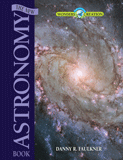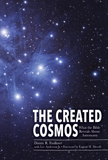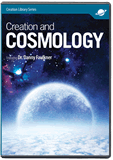Have Cosmologists Discovered Evidence of Inflation?
It appears that the claim that we have found evidence of inflation is overstated. At best, the evidence is very indirect and to the point of being premature.
In 1948, George Gamow, using the big bang model, predicted the existence of the cosmic microwave background (CMB), sometimes referred to as the cosmic background radiation (CBR or CMBR). In 1965, Arno Penzias and Robert Wilson discovered what had been predicted, and for their CMB findings, they received the Nobel Prize in physics (1978).
The cosmic microwave background (CMB) supposedly arises from an era that took place about 400,000 years after the big bang, when matter had cooled to a temperature of approximately 3,000 K, which allowed electrons and protons to combine to form stable hydrogen atoms for the first time. Prior to this hypothetical “age of recombination,” photons of light could not travel far before they were absorbed by the electrons. This made the universe opaque. After this time, the universe would have been transparent, allowing photons to decouple from matter and pass mostly unhindered through space. Today, we see the radiation from the “age of recombination” coming from all directions after it had traveled billions of light years, but since the universe has expanded about a thousandfold since, this distant radiation has cooled by a factor of a thousand to about 2.73 K.
Because the steady-state model, the big bang’s primary competitor in secular astronomy, could not accommodate the CMB, the big bang has thus been the standard cosmogony for the past four decades.
As difficulties have arisen for the big bang model, cosmologists have liberally modified the theory to meet each challenge.
As difficulties have arisen for the big bang model, cosmologists have liberally modified the theory to meet each challenge. For instance, in 1981 Alan Guth proposed the idea of “inflation” to solve the horizon and flatness problems. Inflation posits that very shortly after the big bang, the universe underwent a very rapid expansion to a much larger size. Descriptions of the process vary, but typically, inflation supposedly happened about 10–35 seconds after the big bang, during which the now-visible universe expanded from perhaps the size of a proton to the size of an orange. Note that inflation is far faster than the speed of light, and that the normal rate of universal expansion that we see today prevailed after inflation.
Cosmologists generally agree that inflation has occurred because it handled the flatness and horizon problems so well. But is there any evidence for inflation? No, but on March 16, 2006 (and as AiG mentioned in a preliminary comment about this finding at The Big Bang and Evidence for the “Inflation Theory”—A Preliminary Comment), NASA posted a story that answered, “Yes.” A quote from the story states, “Scientists peering back to the oldest light in the universe have evidence to support the concept of inflation.”
What did the scientists find? In 2001, NASA launched the Wilkinson Microwave Anisotropy Probe (WMAP). WMAP contained two basic types of instruments to measure slight spatial variations in temperature and polarization in the CMB. In the big bang scenario, the early universe must have contained slight variations in density that eventually gave rise to structure, such as galaxies. If the universe were initially too smooth, there would be no structure, and if it were too clumpy, nearly all matter would have been gobbled up into black holes. Either way, we wouldn’t be here to observe the universe. The slight variations in densities in the early universe would manifest themselves as slightly cooler and warmer regions in the CMB. In 1991, the Cosmic Background Explorer (COBE) was barely able to detect the temperature variations, but the temperature probes aboard WMAP were able to map the temperature variations in much greater detail.
The WMAP polarization experiments were designed to measure something more subtle. Being a wave phenomenon, light can be polarized. That is, light can vibrate in preferred directions. Most light is unpolarized, but various mechanisms can introduce some polarization. The matter clumping in the early universe ought to manifest itself to a degree in what physicists call “E-mode polarization.” WMAP has found evidence of this. However, B-mode polarization ought to arise from gravity waves resulting from inflation. Has WMAP found B-mode polarization? Quoting from the NASA website: “WMAP detected E-mode polarization but not B-mode yet.” So despite the claim made by the press release and the website, there is no evidence of inflation. What is going on then?
Cosmologists now regularly take data from very different experiments and combine them into a single result, though press results rarely discuss the input of the disparate data. An example of this was the February 2003 announcement of the latest 13.7 billion year age estimate of the universe, along with estimates of the percentages of mass distributed amongst lighted and dark matter and “dark energy.” Also left unsaid is how extremely model-dependent the conclusions are. That is, if we change the model slightly, the conclusions change as well. The recent claim of the discovery of evidence for inflation builds upon the earlier WMAP work, among others, and, like the others, is very model-dependent. For instance, how the observed E-mode polarization constrains the amount of inflation energy is model-dependent. The model dependence amounts to a type of circular reasoning—cosmologists interpret the data assuming inflation, and then used the data to support inflation.
It appears that the claim that we have found evidence of inflation is overstated. At best, the evidence is very indirect and to the point of being premature.
So, why all the fanfare now? In a few years, new experiments currently underway ought to measure B-mode polarization directly. However, even if B-mode polarization is found, the conclusion that it must result from inflation will be model-dependent. Inflation is such a foundation for modern big bang cosmogony that it is almost unthinkable among cosmologists that it might not exist. Thus the claim of first discovery of evidence for inflation carries much reward when compared to the risk of eventually being proved wrong.
NOTE: For more information about inflation and the big bang, and to read a summary of how the big bang is a direct contradiction of what the Bible teaches in Genesis chapter one, read our recent article The Big Bang and Evidence for the “Inflation Theory”—A Preliminary Comment.
Recommended Resources

Answers in Genesis is an apologetics ministry, dedicated to helping Christians defend their faith and proclaim the good news of Jesus Christ.
- Customer Service 800.778.3390
- © 2024 Answers in Genesis







